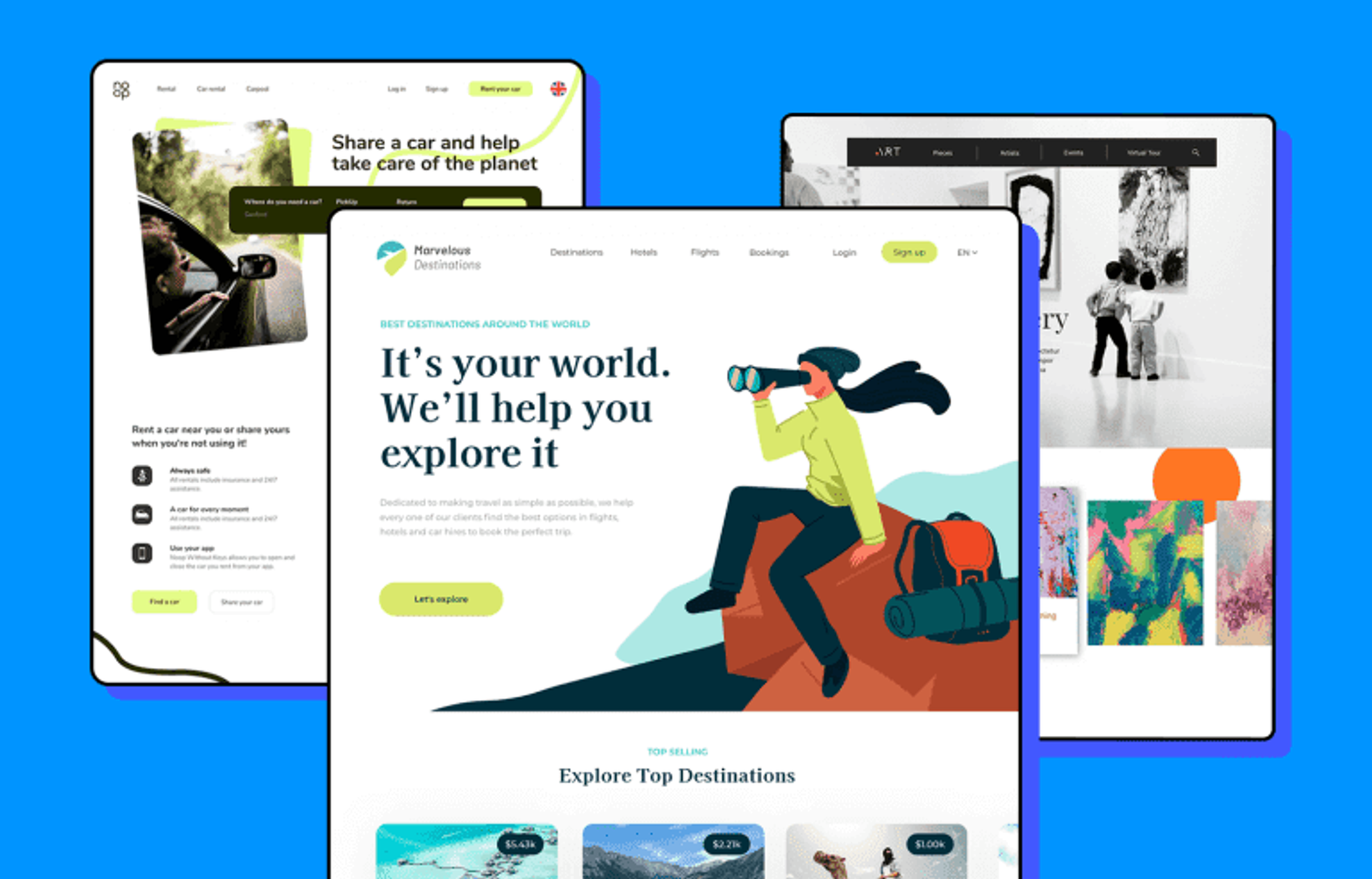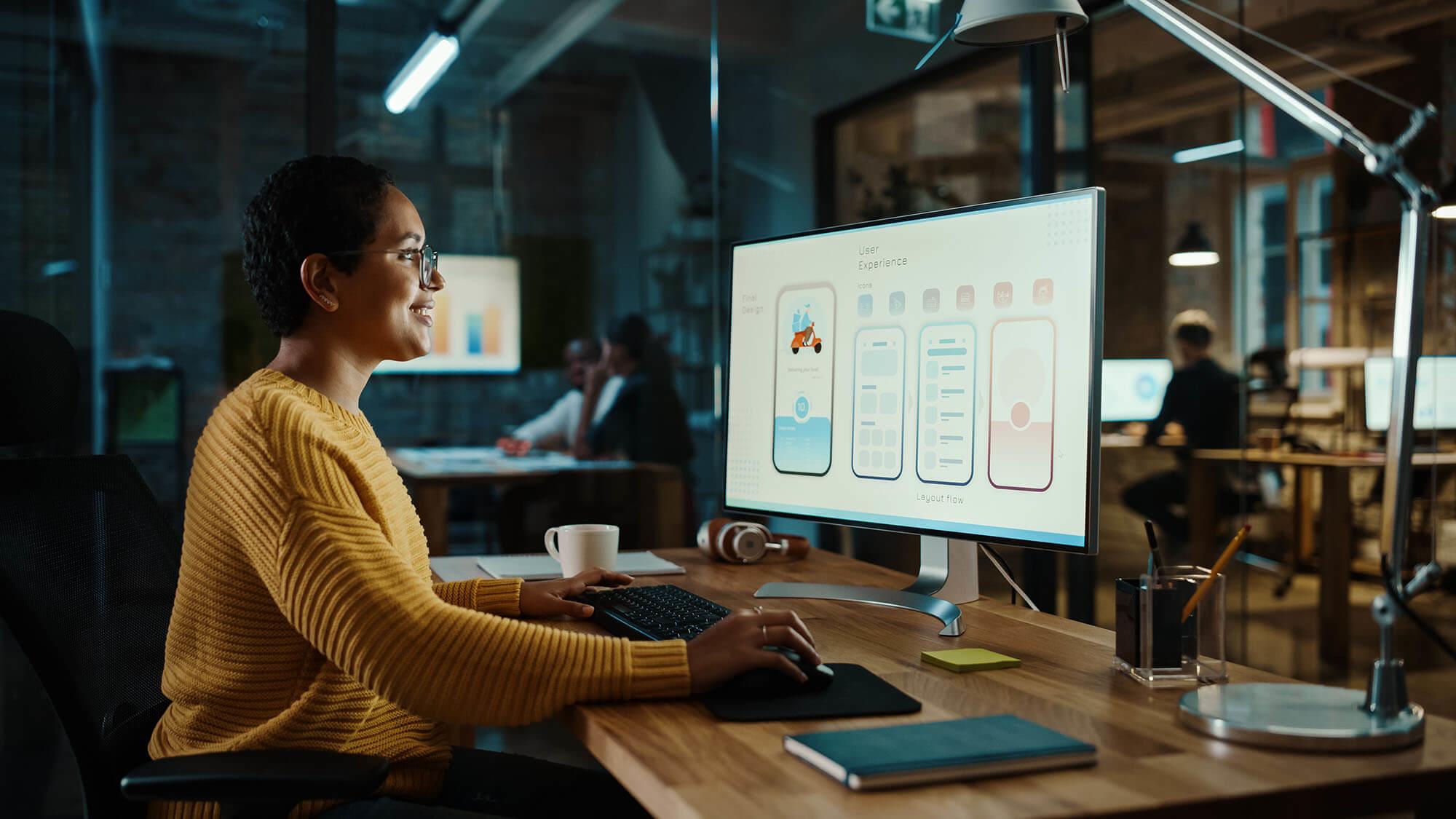Aligned Position Web Design: Perfectly Designed Websites to Capture Your Audience’s Attention
Aligned Position Web Design: Perfectly Designed Websites to Capture Your Audience’s Attention
Blog Article
The Most Effective Kinds Of Web Style to Improve Customer Experience and Interaction
In the ever-evolving landscape of electronic communication, the efficiency of Web style dramatically influences customer experience and involvement. Numerous design strategies, such as minimalist, responsive, and interactive formats, each deal one-of-a-kind benefits that can cater to varied customer demands.
Minimal Web Style
As electronic landscapes end up being progressively messy, minimal Web style has actually become a powerful strategy to improving user experience. This style viewpoint prioritizes simpleness, focusing on crucial elements while eliminating unnecessary interruptions. By utilizing sufficient white space, uncomplicated navigation, and a minimal shade palette, minimal design fosters clarity and routes individual interest to vital web content.
The core principle of minimalist website design is to create a smooth communication for customers. By decreasing cognitive lots, users can promptly comprehend info without really feeling bewildered. This direct strategy not only improves usability but additionally motivates involvement, as site visitors are most likely to explore a website that is visually attractive and very easy to browse.
Additionally, minimalist style commonly stresses typography and images, using these aspects strategically to convey messages properly. In significance, minimal Web style is not simply a trend; it is a thoughtful method that identifies the importance of user-centered design.
Receptive Website Design
In today's varied digital environment, receptive Web design has actually become important for creating a seamless user experience throughout a multitude of devices. As customers access websites on smart devices, tablet computers, desktop computers, and laptops, the capacity of a site to adapt its format and material to various screen sizes and resolutions is critical.
Responsive website design employs adaptable grids, pictures, and CSS media inquiries to guarantee that Web content is provided efficiently, despite the gadget used. This approach not only improves the aesthetic allure of a website however additionally considerably improves functionality. Customers are more probable to involve with a site that uses a consistent experience, as it eliminates the disappointment of having to zoom in or scroll exceedingly.
Moreover, search engines, consisting of Google, focus on mobile-friendly websites in search positions. By adopting receptive design, organizations can improve their visibility and reach a broader audience. This strategy additionally simplifies internet site upkeep, as a solitary version of the website can satisfy all gadgets, minimizing the need for multiple versions. In recap, receptive Web layout is an essential method that improves customer experience, engagement, and overall complete satisfaction.
Interactive Website Design
Responsive website design prepares for boosting individual experience, but interactive Web design takes this a step additionally by engaging users in a more dynamic means - Aligned Position Web Design. By integrating aspects such as computer animations, clickable prototypes, and real-time comments, interactive website design mesmerizes individuals, drawing them into a richer surfing experience
This method not only fosters involvement but additionally motivates users to Extra resources check out material proactively as opposed to passively eating it. Methods such as gamification, where individuals make incentives for completing tasks, can substantially enhance the moment invested on a website and improve general complete satisfaction. Moreover, interactive attributes can streamline complex info, making it extra satisfying and absorbable.

Integrating interactive layout components can also lead to greater conversion prices, as customers are much more likely to engage with a site that actively involves them. Aligned Position Web Design. Inevitably, interactive Web design transforms user experiences right into memorable journeys, making sure that visitors return time and again
Apartment Style
Defined by its minimalistic strategy, flat style stresses simplicity and performance, removing away unnecessary elements and concentrating on essential attributes. This layout philosophy prioritizes usability, guaranteeing that users can browse interfaces effortlessly and efficiency. By employing a tidy visual, flat layout gets rid of the mess typically located in a lot more elaborate designs, consequently enhancing customer concentrate on content and capability.
The hallmark of flat style hinges on its use bold shades, simple typography, and geometric shapes. These aspects add to an aesthetically appealing interface that is both approachable and modern-day. Furthermore, level style fosters a feeling of clearness, allowing customers to recognize essential activities and info without interruption.
Moreover, level design is especially reliable in receptive Web style, as its simpleness converts well across different tools and screen sizes. By focusing on necessary features, flat layout not just meets individual demands but likewise motivates seamless communication, making it a crucial element of efficient Web layout techniques.
Flexible Web Layout
Flexible Web design personalizes the customer experience by developing multiple repaired layouts tailored to various screen dimensions and devices. Unlike receptive design, which fluidly adjusts a solitary format, adaptive style utilizes unique formats for certain breakpoints, ensuring ideal discussion on different systems. This approach enables designers to concentrate on the one-of-a-kind characteristics of each tool, boosting functionality by providing exactly what web customers require based upon their context.
Among the primary benefits of adaptive website design is its capacity to enhance tons times and performance. By offering tailored web content and pictures that fit the customer's gadget, web sites can minimize information usage and improve loading rates. This is particularly useful for individuals with slower connections or limited information strategies.

Additionally, adaptive layout assists in a much more consistent and regulated branding experience. Considering that designers develop numerous formats, they can guarantee that the aesthetic aspects straighten with the brand's identity across various platforms - Aligned Position Web Design. This results in a natural individual experience, enhancing engagement and advertising customer retention
Verdict
In conclusion, the assimilation of minimalist, responsive, and interactive website design concepts significantly boosts user experience and involvement. Minimal layout cultivates quality and emphasis, while receptive design guarantees versatility across numerous devices, promoting availability. Interactive layout astounds users through vibrant components, motivating expedition and personalization. Collectively, these layout comes close to contribute to the creation of straightforward atmospheres that not only enhance complete satisfaction yet additionally drive higher conversion rates, highlighting their important browse around these guys significance in modern Web style techniques.

Minimalist style promotes clarity and emphasis, while receptive design ensures versatility across different tools, advertising accessibility. Jointly, these design comes close to contribute to the development of easy to use atmospheres that not only improve contentment but also drive greater conversion prices, emphasizing their critical importance in modern Web layout techniques.
Report this page